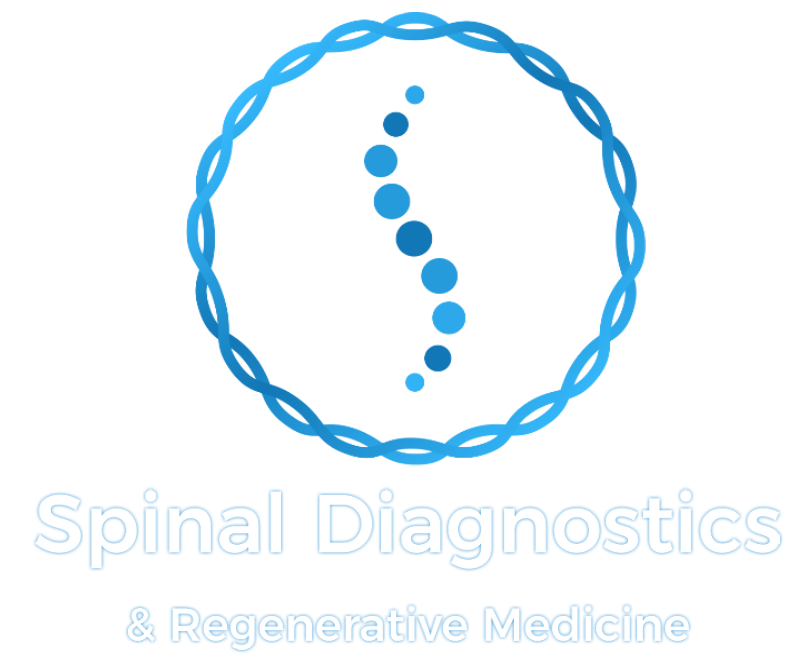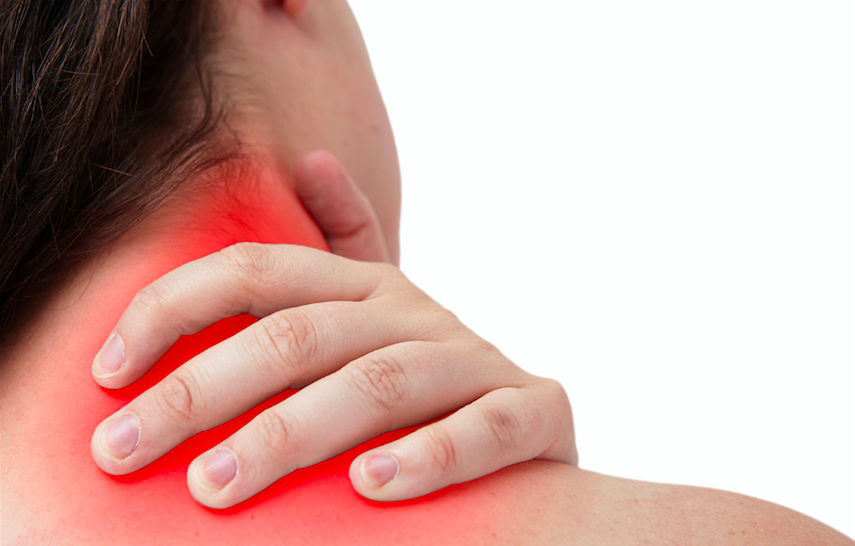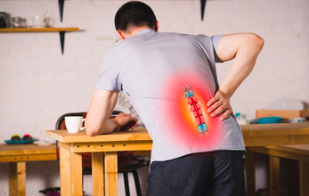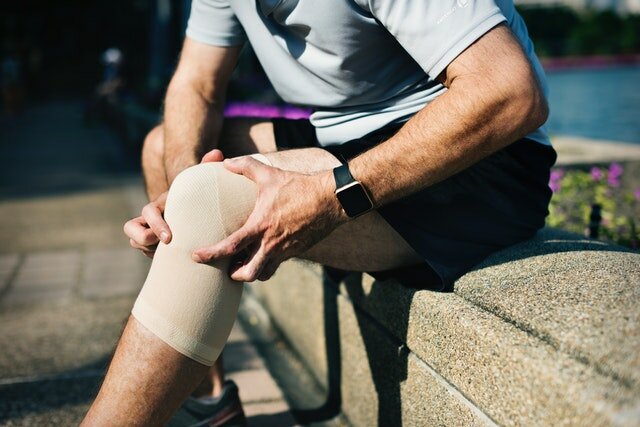
Other Conditions


Treating Chronic Pain Conditions
Our pain management physicians at Spinal Diagnostics & Regenerative Medicine offer treatments for a variety of chronic pain conditions, including: migraines, compression fractures, arthritis pain, peripheral neuropathy, spinal stenosis, and much more.
If you’re tired of suffering with back pain, neck pain, migraine headaches, or any kind of physical chronic pain, give our Colorado Springs office a call and schedule an appointment with one of Spinal Diagnostics & Regenerative Medicine’s pain management physicians.
You can see a variety of the conditions and chronic pain conditions that we treat at Spinal Diagnostics & Regenerative Medicine on this page. Many of our pain management services are provided right at our Colorado Springs practice. Then Learn more about our specialized treatments for spine pain, back pain, neck pain, migraines, chronic pain, and more on our services page.
Migraine Treatments at
Spinal Diagnostics & Regenerative Medicine
MIGRAINE TREATMENTS
The pain management physicians at Spinal Diagnostics & Regenerative Medicine in Colorado Springs often recommend the following migraine treatments:
- Trigger Point Injections
- Botox Injections
- Occipital Nerve Blocks
- Medication Management
- Infusions For Migraines
Are you tired of suffering from migraine pain? Are you ready to try new treatments? Contact Spinal Diagnostics & Regenerative Medicine to schedule a consultation with one of our pain management physicians in Colorado Springs.


Conditions Treated at Spinal Diagnostics & Regenerative Medicine
Compression Fractures
Compression fractures are a special type of fracture that occurs in osteoporotic bone. As we age, the bones of our body can become less dense and put them at risk of fracture. The bones of the upper lumbar and lower thoracic area are at particular risk, as this is the point where the rigid rib cage attaches to the mobile lumbar spine. Heavy lifting or a fall can cause one of the bones to break and compress, causing a compression fracture. Patients will feel a sudden onset of severe pain in the back that may wrap around the sides of there body. A simple x ray is all that is needed to diagnose it. An MRI adds the advantage of identifying weather it is a new or old fracture as well as providing more detail of the surrounding soft tissue.
These fractures are unique because this diseased bone doesn’t heal well. These fractures are prone to progress further into a wedge, causing dramatic postural changes. They can also cause continued pain and may retro pulse into the spinal cord. This is a catastrophic outcome and can be avoided with early intervention.
Thankfully there is a minimally invasive treatment call a kyphoplasty. The earlier the patient gets treatment the better. Your chances of re establishing proper vertebral height and preventing progression are greatest early in the injury process. Patients only need light sedation and are left with only a poke hole on the skin. This technique has revolutionized compression fracture treatment and has helps thousands of patients. For more detail learn about Kyphoplasty under the services section.
Compression Fractures
Compression fractures are a special type of fracture that occurs in osteoporotic bone. As we age, the bones of our body can become less dense and put them at risk of fracture. The bones of the upper lumbar and lower thoracic area are at particular risk, as this is the point where the rigid rib cage attaches to the mobile lumbar spine. Heavy lifting or a fall can cause one of the bones to break and compress, causing a compression fracture. Patients will feel a sudden onset of severe pain in the back that may wrap around the sides of there body. A simple x-ray is all that is needed to diagnose it. An MRI adds the advantage of identifying weather it is a new or old fracture as well as providing more detail of the surrounding soft tissue.
These fractures are unique because this diseased bone doesn’t heal well. These fractures are prone to progress further into a wedge, causing dramatic postural changes. They can also cause continued pain and may retro pulse around the spinal cord. This is a catastrophic outcome and can be avoided with early intervention.
Thankfully there is a minimally invasive treatment call a kyphoplasty. The earlier the patient gets treatment the better. Your chances of re-establishing proper vertebral height and preventing progression are greatest early in the injury process. Patients only need light sedation and are left with only a poke hole on the skin. This technique has revolutionized compression fracture treatment and has helps thousands of patients.
Spinal Stenosis
Spinal stenosis is a broad term used to described narrowing of the inside of the spinal canal, which results in pressure on the nerves or spinal cord. This occurs as a result of a bulging disc, enlarging facet joints, bone spurs, and enlargement of the spinal ligaments call the ligamentum flavum. Many elderly patients have a combination of all of these elements, which can lead to profound narrowing and pain. Patients will feel back pain and numbness that goes down the legs or arms depending on the area affected. They often feel best when pushing a shopping cart, as this slight forward flexion lessens the stenosis and provides support while walking.
This condition can be effectively treated with epidural steroid injections, core strengthening, and bracing. But this largely depends on the severity. If you have ongoing pain and muscle wasting than surgical decompression is needed. Patients with severe spinal stenosis who have failed conservative therapy do well with surgery. Patients will ask “why not just have surgery?”. As a pain physician I see two major reasons: adjacent level disease and postoperative fibrosis of the nerve roots.
When you fuse a segment of the spine, that previously mobile segment is now rigid and results in altered normal forces above and below the fusion. Even with a perfect surgery, these forces accelerate the degenerative process across those areas leading to earlier breakdown. This is adjacent level disease. If you’re 80 years old this is not as concerning as if you’re 40 years old. The 40 year old has many years left and will likely need a revision along the way. You may still require surgery depending on the severity of your presentation, just be aware of this phenomenon.
The next is postoperative fibrosis. A perfect surgery can still result in scar tissue at the surgical site and encasing the nerve root in fibrosis. This can tether the root in place, and with movement results in repetitive pulling on the nerve instead of sliding like it normally does.
Reflex Sympathetic Dystrophy/Complex Regional Pain Syndrome.
This condition is often used interchangeably. It results from either damage to a limb or damage to the nerves in a limb. As that damage heals, the nerve heals in an abnormal way and causes the limb to be hypersensitive and extremely painful. Research is ongoing to determine the exact reason this condition occurs. Early on, patients will note diffuse pain and burning, as well as redness and warmth. Over time the disease can progress to where it becomes cool, clammy, and non functional.
Early identification and treatment is a must for this condition. The longer it is allowed to persist the less likely you are to have a good outcome. Early treatments include medications, physical therapy, and sympathetic blocks. We perform the stellate ganglion block for the upper extremity and a lumbar sympathetic block for the lower extremity as a diagnostic and hopefully therapeutic procedure. A series of these blocks is sometimes needed depending on the severity of the disease. For more severe cases, neuromodulatory techniques such and spinal cord stimulation and peripheral nerve stimulation are likely required to treat this condition.
Arthritis Pain
Arthritis is a general term used to describe disease of the joints. Any joint in the body can be affected by arthritis. We use a variety of modalities to treat this type of pain. Non- steroidal medications as well as other non-opiate medications can be very helpful. Physical therapy modalities that increase range of motion and strength can dramatically improve function.
Neuroablative procedures such as radiofrequency ablation can be used in a variety of areas to treat localized problem areas.
We employ intra-articular injections as well for problems of the shoulder, hip, and knee. Long-term low dose opiate therapy can also be used for those with advanced diffuse disease in a small subset of patients.
There has been a lot of interest in regenerative techniques to treat these issues in the literature. Both allogenic stem cells and platelet-rich plasma (PRP) have led to significant improvements in pain and function but is considered experimental and are not covered by insurance or medicare. There are currently no well designed randomized controlled trials to support or discourage its use.
Post Laminectomy Syndrome/Failed Back Surgery Syndrome (FBSS)
This condition can occur in patients that have had either a laminectomy or a multi level fusion. Normally our spinal nerves slide through a structure called the neural foramen as we move our limbs, a phenomenon known as “neural flossing”. When a patient needs an operation to take pressure off the nerves or stabilize the spine, scar tissue forms in the area that has been operated on. This can cause the nerves to be tethered in a bed of scar, such that moving the limb causes repeated tugging of the nerve. The nerve reacts by becoming more and more sensitive over time, potentially where patients experience continual and intractable back and leg pain.
Early in the process patients can perform aggressive neural flossing exercises and try a series of medications. Other patients need a more definitive solution, which can be achieved with a spinal cord stimulator.
Diabetic Neuropathy
Diabetes is an extremely common condition that can affect the nerves over time. Patients will often complain of burning pain in a “stocking glove” pattern over the feet and lower legs. They may also notice skin changes and discoloration as the condition progresses. Initial treatment focuses on glucose control and medications. Sometimes the condition is too advanced, and a more advanced treatment with a spinal cord stimulator may be needed for long-term pain control. Please see our treatment section for a detailed explanation.
Peripheral Neuropathy
Peripheral neuropathy can occur for a number of reasons including: diabetes, alcohol abuse, chemotherapy exposure, medications, HIV infection, end stage renal disease, amyloidosis, hypothyroidism, vitamin deficiencies, lyme disease, autoimmune dysfuction (eg Guillain-Barre Syndrome) and idiopathic. Patients will often complain of burning pain in a “stocking and glove” pattern over their feet and hands. They may also notice skin changes and discoloration as the condition progresses. Initial treatment focuses on treatment of the underlying cause and medications. Sometimes the condition is too advanced, and a more advanced treatment with a spinal cord stimulator may be needed for long-term pain control. We always tailor our therapies based on the severity of your symptoms.
Shoulder Pain
The shoulder is one of the most complex joints in the body. Unfortunately this complexity can predispose patients to a variety of conditions. Rotator cuff tendinitis, subacromial impingement, “SLAP’ lesions, and degenerative changes can all occur in the shoulder. We can diagnose and treat your pain through a detailed history, physical exam, and imaging modalities. Physical therapy and a variety of injections can be employed to treat your condition. Sometimes there are mechanical problems that need surgical correction. No matter the cause of your pain is, we can treat whatever condition is affecting your shoulder.
Elbow Pain
The elbow is a joint that is subject to repetitive use injuries. Demands of work and recreational activities can cause pain in the elbow. We can diagnose your pain with a history, physical exam, and imaging. We employ multiple modalities including physical therapy, medications, and injection therapy. Only in the most severe cases is surgery indicated.
Wrist Pain
The wrist is a complex joint that is also subject to a variety of injuries. Carpal tunnel syndrome is the most common condition, which is usually treated with physical therapy, night splints, and injections. Sometimes the condition persists, and an EMG/Nerve conduction study is used to confirm the diagnosis. If nerve damage is present, a surgical carpal tunnel release may be indicated.
Hip Pain
The hip is a large joint that is subject to repetitive forces on an everyday basis. Overuse can cause bursitis or inflammation of the joint as well as degenerative arthritis over time. Certain physical exam maneuvers can help identify hip problems in clinic while x-ray and MRI may be required to definitively diagnose your condition. Minimally invasive ultrasound-guided intraarticular injections can be used to both diagnose your pain as well as treat it. Oftentimes, you will require 6-8 weeks of conservative/injection management before you are a candidate for surgical intervention. Sometimes the degeneration is too advanced, and a total hip arthroplasty is needed to surgically correct your problem.
Knee Pain
The knee is one of the most common areas of pain. Acute injuries like a torn meniscus, cartilage damage, or a torn ligament can cause pain. More chronic conditions like degenerative arthritis or continued pain after total knee replacement can occur. The combination of a detailed history, physical exam, and imaging will allow us to find what is causing your pain. Minimally invasive treatments for the knee includes intraarticular injections with a variety of medications, knee arthroscopy, ligament reconstructive surgery, total knee replacement, or genicular nerve block and radio frequency ablation can be used depending on the underlying condition. No matter what your condition requires we will find the right therapy for you.
YOU HAVE QUESTIONS. WE HAVE ANSWERS.
If you have any questions about our services or procedures please give us a call or fill out this form! If you are looking to schedule an appointment please call and speak with a member of our staff.
6685 Delmonico Dr,
Suite C
Colorado Springs, CO
80919
© 2019 Spinal Diagnostics & Regenerative Medicine
